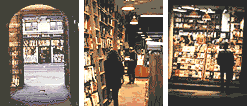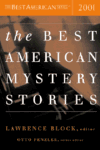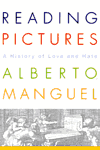|
Excerpt:
One of the first images I remember, consciously aware that it had been created out of canvas and paint by a human hand, was a picture by Vincent van Gogh of the fishing boats on the beach at Saintes-Maries. I was nine or ten, and an aunt of mine, who was a painter, had invited me to her studio to see where she worked. It was summer in Buenos Aires, hot and humid. The small room was cool and smelled wonderfully of turpentine and oil; the stashed-away canvases, leaning one against the other, seemed to me like books distorted in the dream of someone who vaguely knew what books were and had imagined them huge and of single stiff pages; the sketches and clippings my aunt had pinned on the wall suggested a place of private thought, fragmented and free. In a low bookcase were large volumes of colour reproductions, most of them published by the Swiss company Skira, a name that, for my aunt, was a byword for excellence. She pulled out the one dedicated to Van Gogh, sat me on a stool and put the book on my knees. Then she left me.
Most of my own books had illustrations that repeated or explained the story. Some, I felt, were better than others: I preferred the reproductions of watercolours in my German edition of Grimm's Fairy Tales to the convoluted line drawings in my English edition. I suppose what I meant was that they better matched my imagination of a character or a place, or better lent details to fill my vision of what the page told me was happening, enhancing or correcting the words. Gustave Flaubert staunchly opposed the idea of words being paired with pictures. Throughout his life, he refused to allow any illustrations to accompany his work because he thought that pictorial images reduced the universal to the singular. "No one will ever illustrate me while I'm still alive," he wrote, "because the most beautiful literary description is devoured by the most paltry drawing. As soon as a character is pinned down by the pencil, it loses its general character, that concordance with thousands of other known objects that causes the reader to say: 'I've seen that' or 'this must be so-and-so.' A woman drawn in pencil looks like a woman, that is all. The idea is thereafter closed, complete, and all words become now useless, while a written woman conjures up a thousand different women. Therefore, since this is a question of aesthetics, I formally refuse any kind of illustration." I've never shared such adamant segregations.
But the images my aunt offered me that afternoon did not illustrate any story. There was a text: the painter's life, extracts from the letters to his brother, which I didn't read until much later, the title of the paintings, their date and location. But in a very categorical sense, these images stood alone, defiantly, tempting me with a reading. There was nothing for me to do except stare at those images: the copper beach, the red ship, the blue mast. I looked at them long and hard. I've never forgotten them.
Van Gogh's many-coloured beach surfaced often in the imagination of my childhood. Sometime in the sixteenth century, the illustrious essayist Francis Bacon observed that for the ancients, all the images that the world lays before us are already ensconced in our memory at birth. "So that as Plato had an imagination," he wrote, "that all knowledge was but remembrance; so Solomon giveth his sentence, that all novelty is but oblivion." If this is true, then we are all somehow reflected in the many and different images that surround us, since they are already part of who we are: images that we create and images that we frame; images that we assemble physically, by hand, and images that come together, unbidden, in the mind's eye; images of faces, trees, buildings, clouds, landscapes, instruments, water, fire, and images of those images - painted, sculpted, acted out, photographed, printed, filmed. Whether we discover in those surrounding images faded memories of a beauty that was once ours (as Plato suggested) or whether they demand from us a fresh and new interpretation through whatever possibilities our language might offer us (as Solomon intuited), we are essentially creatures of images, of pictures.
Excerpted from Reading Pictures by Alberto Manguel.
© 2001 by Alberto Manguel.
Excerpted by permission of:
Random House, a division of Random House, Inc.
All rights reserved.
No part of this excerpt may be reproduced or reprinted without permission in writing from the publisher.
|




